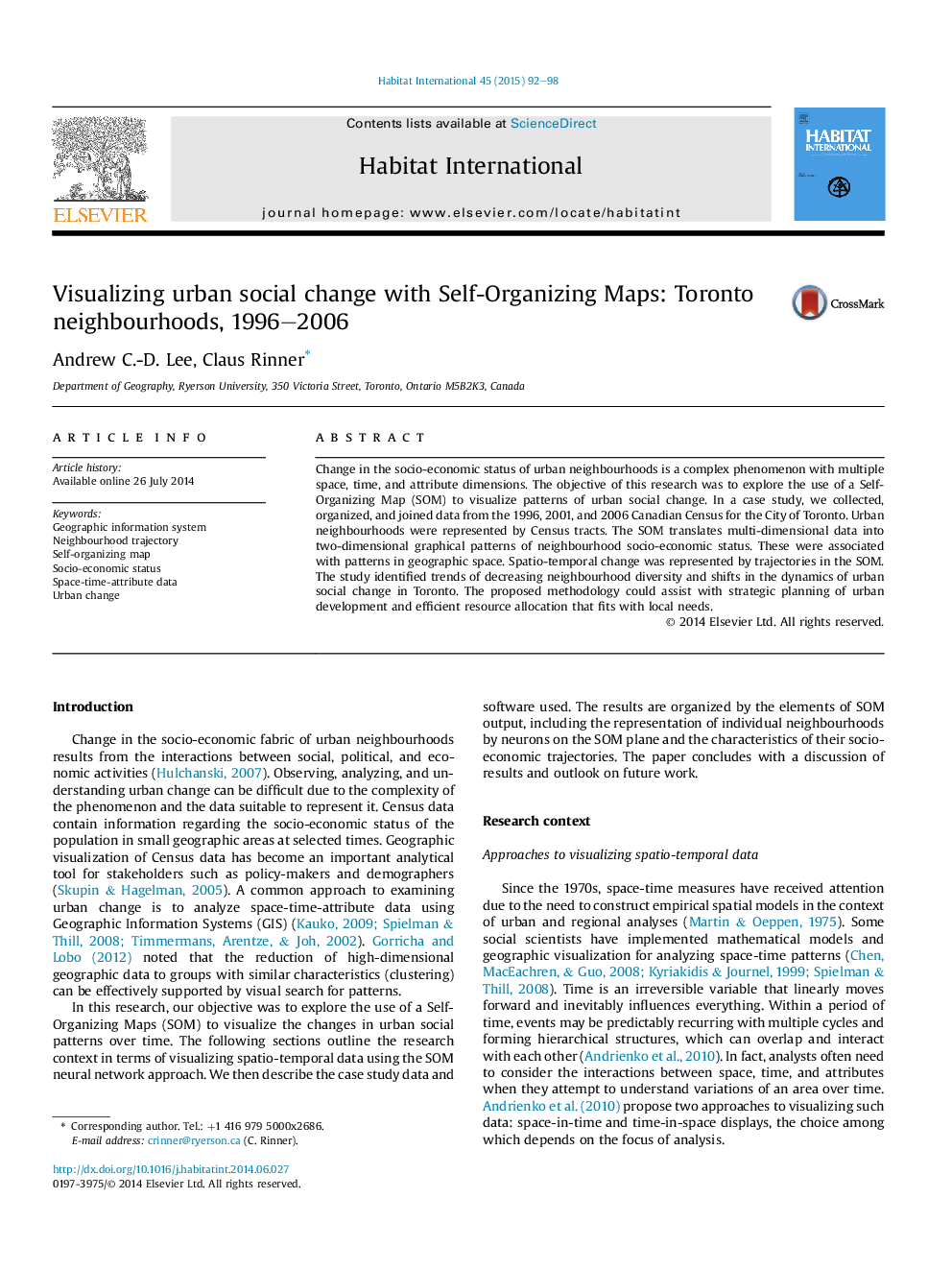| کد مقاله | کد نشریه | سال انتشار | مقاله انگلیسی | نسخه تمام متن |
|---|---|---|---|---|
| 1047734 | 945308 | 2015 | 7 صفحه PDF | دانلود رایگان |

• Self-Organizing Maps (SOMs) represent multi-dimensional data graphically.
• SOMs support the visualization of magnitude and direction of urban change.
• Toronto's neighbourhoods have become less diverse over the last decade.
• The areas with the greatest changes in neighbourhood socio-economic status are shifting within the city.
Change in the socio-economic status of urban neighbourhoods is a complex phenomenon with multiple space, time, and attribute dimensions. The objective of this research was to explore the use of a Self-Organizing Map (SOM) to visualize patterns of urban social change. In a case study, we collected, organized, and joined data from the 1996, 2001, and 2006 Canadian Census for the City of Toronto. Urban neighbourhoods were represented by Census tracts. The SOM translates multi-dimensional data into two-dimensional graphical patterns of neighbourhood socio-economic status. These were associated with patterns in geographic space. Spatio-temporal change was represented by trajectories in the SOM. The study identified trends of decreasing neighbourhood diversity and shifts in the dynamics of urban social change in Toronto. The proposed methodology could assist with strategic planning of urban development and efficient resource allocation that fits with local needs.
Journal: Habitat International - Volume 45, Part 2, January 2015, Pages 92–98